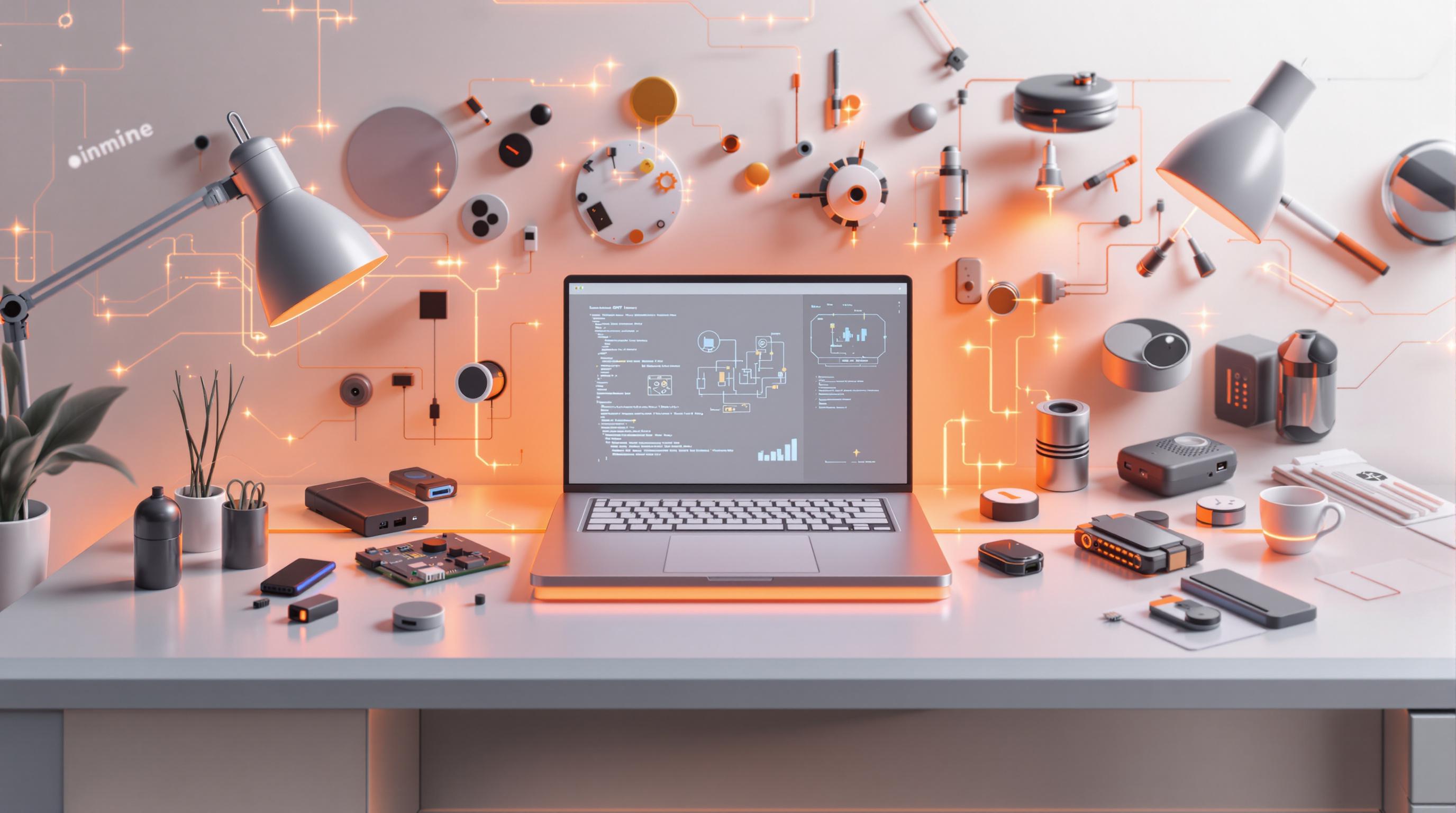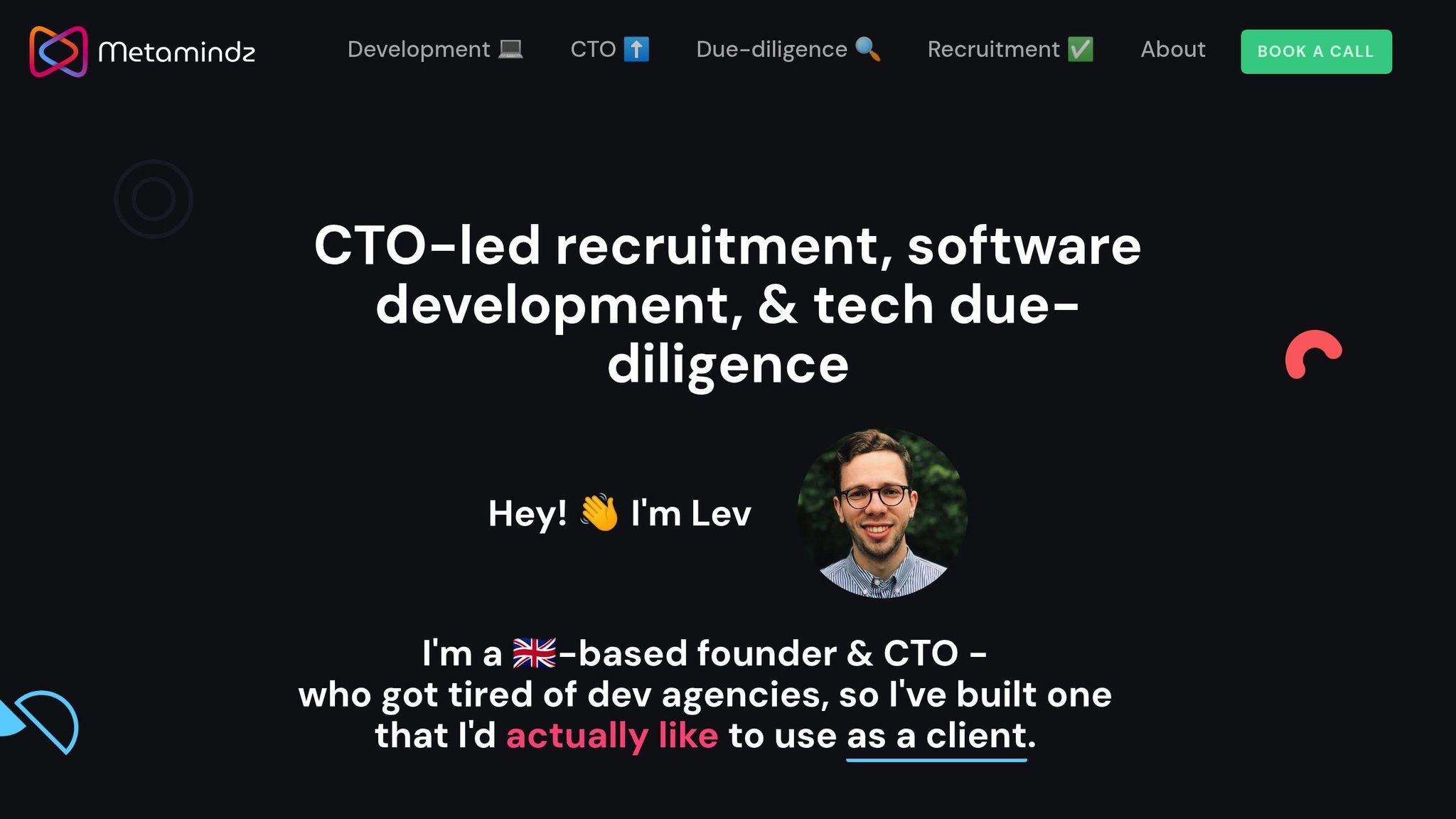IoT Development Costs: Breakdown and Planning Guide

IoT Development Costs: Breakdown and Planning Guide
IoT development can be expensive, but understanding costs upfront helps you plan better. Here's a quick breakdown of what to expect when building IoT solutions:
- Hardware Costs: Start at $30,000 for basic setups. Sensors, WiFi modules, and microcontrollers are key components.
- Software Development: Begins at $50,000. Includes cloud services, app development, and analytics.
- Connectivity: Costs $4–$12 per device annually, depending on the network type (e.g., LoRaWAN, cellular).
- Security: Varies based on encryption, authentication, and monitoring needs.
- Maintenance: Ongoing expenses for updates, database optimization, and real-time monitoring.
Key Cost-Saving Tips:
- Select components wisely to match project needs.
- Negotiate volume discounts with vendors.
- Start with basic features and scale over time.
- Use entry-level cloud plans and optimize data usage.
Quick Overview (Cost Ranges):
| Cost Category | Typical Range | Key Factors |
|---|---|---|
| Hardware | $30,000+ | Sensors, chips, production setup |
| Software | $50,000+ | Cloud, app, and firmware development |
| Connectivity | $4–$12/device/year | Network fees and data transfer |
| Maintenance | $10,000+/year | Updates, security, and analytics monitoring |
Pro Tip: Allocate 15–20% of your budget for unexpected costs like hardware issues or development overruns.
This guide explains how to estimate, manage, and reduce IoT development costs effectively. Keep reading for detailed strategies and examples.
[Webinar] IoT-Powered Automation VS Building Management ...
Hardware Costs
About 30% of IoT expenses come from hardware. Understanding these costs is crucial for accurate budgeting and finding ways to save.
Component Price List
The cost of core IoT components depends on factors like quality, quantity, and specific features. Here's a general breakdown:
| Component Type | Unit Cost Range | Volume Pricing | Key Details |
|---|---|---|---|
| Basic Sensors | $0.38 – $5 | Discounts for bulk orders | Includes temperature, humidity, and motion sensors |
| WiFi Modules | $4 – $10 | Below $2 for high-volume orders | Example: ESP8266 module |
| Microcontrollers & Chips | Typically under $5 | Bulk pricing available | Consider processing power, connectivity, and memory |
Production processes also play a significant role in overall costs, beyond just the components.
Testing and Production Expenses
There’s more to production costs than just buying components. Key stages include:
1. Prototype Development
Prototypes often use higher-cost components and require extensive testing, making them more expensive per unit compared to full-scale production.
2. Manufacturing Setup
This stage involves configuring assembly lines, quality control systems, and testing processes for initial production runs.
3. Scale Production
Costs for full-scale production depend on the bill of materials (BOM), assembly complexity, quality control measures, and production volume.
Breaking down these costs helps with better budget planning, which is a focus of this guide.
Hardware Cost Reduction Tips
You can lower hardware costs without sacrificing quality by planning strategically:
-
Smart Component Selection
Choose components based on factors like power efficiency, reliability, and scalability. Match connectivity options (e.g., Wi-Fi, Bluetooth, or LoRaWAN) to your project's specific needs. -
Vendor Relationships
Negotiate for volume discounts, establish long-term contracts, and build partnerships with dependable suppliers to lock in consistent pricing. -
Platform Choices
Use open-source hardware platforms, standardized components, and modular designs to simplify maintenance and upgrades.
For instance, environmental monitoring projects might need a network of advanced sensors, while agricultural projects could get by with simpler temperature sensors. Tailoring hardware to the specific needs of your project can prevent overbuilding and save money.
Software Costs
Understanding software development costs is key to creating accurate budgets.
Cloud Service Fees
Here’s a breakdown of costs for 1,000 devices sending 400,000 messages per month:
| Provider | Base Cost | Messages/Device/Month | 1,000-Device Cost |
|---|---|---|---|
| AWS IoT Core | $0.042/device/year | 400,000 | $183.60 |
| Azure IoT Hub | $10/unit/month | 400,000 | $250.00 |
| Google IoT Core | Based on volume | 400,000 | $1,382.40 |
| HiveMQ Cloud | Connection-based | 400,000 | $203.68 |
AWS Free Tier offers the following benefits:
- 2,250,000 connection minutes
- 500,000 messages
- 225,000 device shadow or registry operations
- 250,000 rules triggered and 250,000 actions applied
Next, let’s look at the costs for app and firmware development.
App and Firmware Development
Here’s an estimate of development costs based on project complexity:
| Project Scale | Development Hours | Typical Cost Range |
|---|---|---|
| Basic IoT App | 400–600 | $10,000 – $24,000 |
| Custom Features | 700–800 | $28,000 – $40,000 |
| Enterprise Solution | 1,100+ | $55,000+ |
Developer hourly rates vary depending on the region:
- East Europe: $30 to $50/hour
- South-East Asia: $20 to $40/hour
- India: $20 to $50/hour
After development, additional costs may arise when integrating advanced analytics and AI.
Analytics and AI Costs
Adding analytics and AI can improve functionality but requires careful budgeting. Major cost factors include:
- Specialized personnel: In the US, firmware engineers with C++ expertise earn between $90,000 and $145,000 annually.
- Infrastructure needs: Expenses for data storage, processing, machine learning model development, edge computing, and real-time analytics.
As you gather more data, you can focus on developing machine learning models that run directly on devices. This approach can help improve system efficiency over time [5].
To keep costs manageable, start with core features and expand analytics capabilities gradually as your IoT deployment grows.
sbb-itb-fe42743
Network and Upkeep Costs
Keeping connectivity, security, and maintenance costs under control is a key part of managing your IoT budget.
Network and Data Costs
Connectivity expenses vary based on the type of network you choose. For cellular IoT setups, data costs average about $0.04 per megabyte [3]. Here's a quick comparison of common options:
| Connection Type | Annual Cost per Device | Data Allowance |
|---|---|---|
| Narrowband IoT | $6 - $12 | Basic connectivity |
| LoRaWAN | $4 - $6 | Low bandwidth |
| Cellular (Choice IoT) | Starting at $12 | 1 MB and up |
For example, using AWS IoT Core in the US East region, a fleet of 10,000 devices with constant connectivity would incur:
- Connection time: Roughly 4.32 billion minutes per month
- Base rate: $0.08 per million minutes
- Monthly cost: $345.60 [4]
Securing these connections is critical for your project's success.
Security Costs
Protecting your IoT network requires a focus on security measures like:
- Encryption to safeguard data and authentication systems
- Regular vulnerability and penetration tests
- Achieving compliance certifications, such as those aligned with IEC 62443 standards [2]
"Minimize data transmission by optimizing device payloads to reduce communication costs and errors." [2] - Bridgera
System Maintenance Costs
Once your network and data are secure, ongoing system maintenance becomes essential.
| Maintenance Area | Description | Cost Impact |
|---|---|---|
| Software Updates | Updating firmware and communication protocols | Monthly/quarterly cycles |
| Database Optimization | Improving query performance and storage | Ongoing operational cost |
| Analytics Fine-tuning | Real-time monitoring and predictive maintenance | Improved resource use |
| API Services | System integration with enterprise platforms | Requires regular updates |
To lower maintenance expenses, consider these strategies:
- Use remote monitoring for better oversight
- Optimize database queries to boost efficiency
- Employ edge computing to cut data transmission costs
- Schedule software updates during off-peak hours
Real-time analytics can help detect potential issues early, minimizing unexpected maintenance costs and reducing downtime across your IoT system.
Project Budget Planning
When planning an IoT project budget, it's essential to allocate funds effectively across development, production, and operational stages. Here's a detailed guide to help you structure your financial planning.
Budget Template Guide
| Cost Category | Components | Typical Range |
|---|---|---|
| Development | Firmware, Front-end, Backend, Testing | 40–50% of total budget |
| Production | Hardware, Manufacturing, Testing | 30–35% of total budget |
| Operations | Cloud Services, Maintenance, Security | 20–25% of total budget |
Make sure to include these key expenses:
- Hardware Engineering: Costs for components and prototyping
- Software Development: Cloud infrastructure and application creation
- Team Resources: Salaries for engineers, designers, and project managers
- Testing & Quality: Equipment and certification-related costs
- Operational Expenses: Hosting, maintenance, and security measures
This framework ensures you account for all major cost areas, providing a comprehensive financial plan for your IoT project.
Risk and Emergency Funds
Set aside a portion of your budget for unexpected challenges:
| Risk Category | Buffer Allocation | Purpose |
|---|---|---|
| Development Overruns | 15–20% | Address code refactoring or additional testing needs |
| Hardware Issues | 10–15% | Cover component replacements or redesigns |
| Security Incidents | 5–10% | Fund emergency patches or audits |
For instance, PepsiCo successfully accelerated their IoT project timeline from three years to just ten months by using collaborative planning tools and keeping flexible emergency funds for quick adjustments [6]. Having these buffers in place can make your project more resilient to unforeseen issues.
Step-by-Step Implementation
Break your project into manageable phases to streamline execution:
-
Initial Planning Phase
Focus on defining core requirements and essential features. Engage IoT specialists to optimize hardware expenses and establish cost baselines. -
Development Rollout
Begin with a pilot phase to test your assumptions and identify potential problems early. -
Scaling Strategy
Expand gradually, guided by performance metrics. Plan for necessary upgrades to infrastructure, devices, team resources, and security. -
Optimization Phase
Continuously monitor and refine your budget based on actual usage. Tools like Azure IoT Central can help you track device performance and uncover cost-saving opportunities.
Summary
Cost Overview
IoT development expenses cover four main areas, with recent trends showing shifts in these costs. Hardware has become more affordable, with sensor prices dropping over 200% between 2004 and 2018 to just $0.40 per unit [3]. However, network connectivity remains a recurring expense, costing $4 to $6 per device annually for LoRaWAN connectivity [1].
Here's how IoT project costs typically break down:
| Cost Category | Annual/Monthly Expense | Key Components |
|---|---|---|
| Development | $30,000-$90,000/month | Software, firmware, testing |
| Hardware | $10,000+ initial cost | Components, certification |
| Connectivity | $4-$6/device/year | Network fees, data transfer |
| Cloud Services | $10-$500/month | Platform fees, storage |
Understanding these costs helps in designing strategies to reduce expenses effectively.
Cost-Saving Tips
Reducing IoT development costs is possible with smart strategies. For example, using third-party device monitoring tools can lower development expenses by up to 57% [8]. Here are some practical approaches:
- Preventive Maintenance: Use sensors to monitor equipment and schedule maintenance before issues arise. This can help avoid downtime, which can cost businesses $100,000 to $300,000 per hour [7].
- Cloud Services: Start with entry-level plans on platforms like Azure IoT Hub ($10/month) or AWS IoT Core ($0.25 per device) to scale as needed [1].
- Efficient Development: Begin with a discovery phase costing $5,000-$15,000 to confirm technical feasibility and define project requirements before diving into full development [1].
Metamindz Services

Metamindz offers a comprehensive approach to managing IoT development costs, tackling challenges at every stage - from design to ongoing optimization. Their services focus on three key areas:
1. Strategic Planning
Through their fractional CTO service, Metamindz provides expert advice on technical strategies and cost management. This guidance helps businesses avoid common project missteps [3].
2. Technical Implementation
The team builds scalable IoT solutions designed for long-term efficiency, balancing performance with cost-effectiveness.
3. Ongoing Optimization
Regular assessments and performance monitoring ensure that organizations maximize their IoT investments. This aligns with projections that IoT could add $5.5 trillion to $12.6 trillion in global value by 2030 [1].
"Metamindz drives growth by solving complex challenges effectively" [9]
